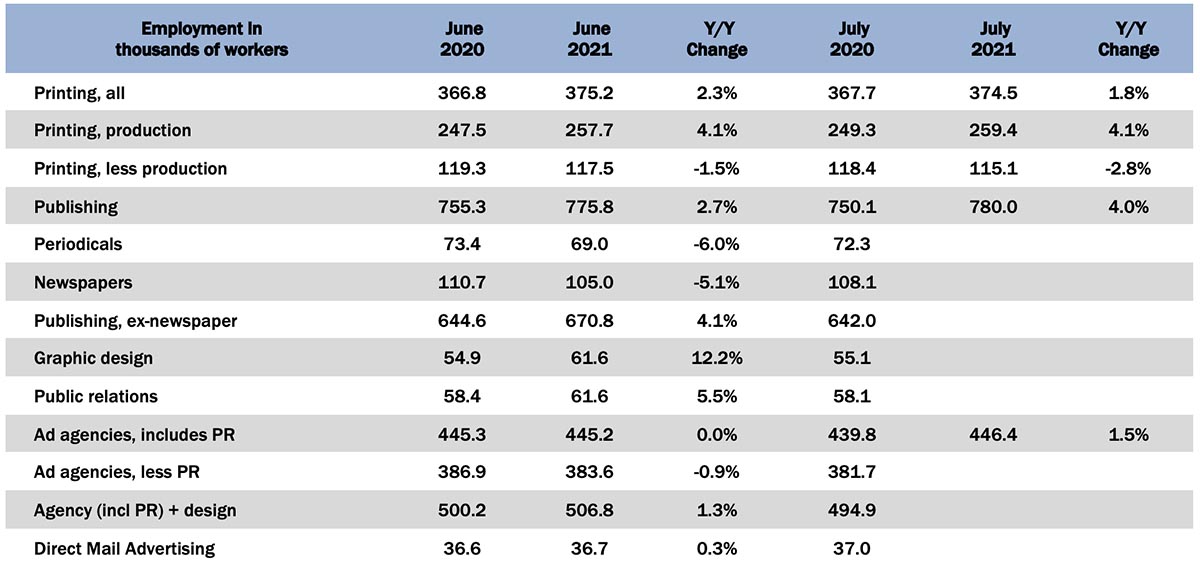
July curtailed the upward trend in employment, although happily it didn’t turn downward. Overall printing employment was down -0.2% from June and production employment up +0.7%. Non-production printing employment, however, continued its downward trajectory, coming in -2.0% from June.
Publishing employment is also flat; general publishing employment was up +0.5% from June. Digging into the specific publishing segments (reporting lags a month), from May to June, there was no change in periodical publishing employment (which had grown +4.4% from April to May) and newspaper publishing employment was up a scant +0.1%.
The creative markets are faring a little bit better, and June was a decided improvement over May. Graphic design employment was up +2.5% from May to June, ad agencies (less PR) were up +1.2%, and PR took a slight drop in June by -0.2%. Direct mail advertising employment was up +1.4%, not bad but still below the +2.8% increase we had seen from April to May. We have heard anecdotally that direct mail was a beneficiary of the pandemic and we have been seeing that reflected in recent employment figures.
In the general July employment report, said the BLS:
Total nonfarm payroll employment rose by 943,000 in July, and the unemployment rate declined by 0.5 percentage point to 5.4 percent, the U.S. Bureau of Labor Statistics reported today. Notable job gains occurred in leisure and hospitality, in local government education, and in professional and business services.
Meanwhile, “employment for May was revised up by 31,000, from +583,000 to +614,000, and the change for June was revised up by 88,000, from +850,000 to +938,000. With these revisions, employment in May and June combined is 119,000 higher than previously reported.”
Some other quick hits from the July report:
- The labor force participation rate increased from 61.6% to 61.7%.
- The employment-to-population ratio increased from 58.0% to 58.4%.
- The number of persons working part time for economic reasons was relatively unchanged at 4.5 million in June, close to the pre-pandemic level of 4.4 million.
- The 25-to-54 participation rate increased from 81.7% in June to 81.8% in July.
Calculated Risk adds, “There are still 5.7 million fewer jobs than prior to the recession, but overall this was a strong report.”














